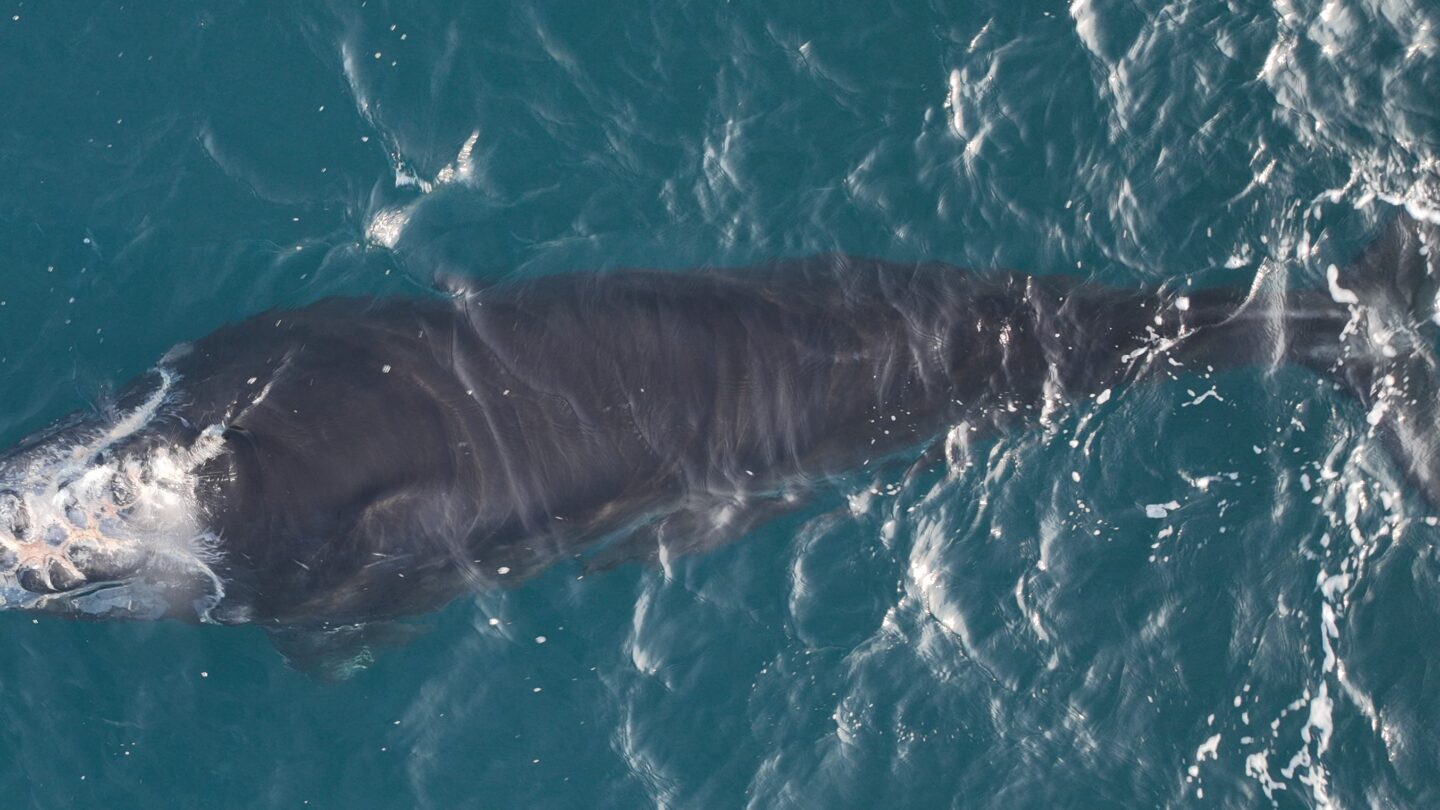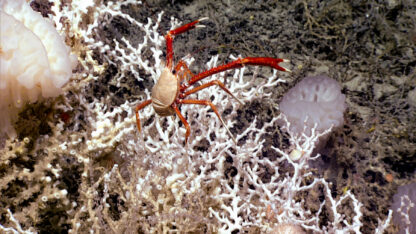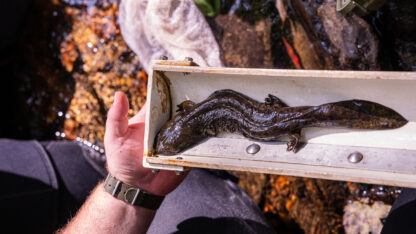This coverage is made possible through a partnership with WABE and Grist, a nonprofit, independent media organization dedicated to telling stories of climate solutions and a just future.
Just after Thanksgiving in 2023, a North Atlantic right whale known as Juno appeared with her calf off the South Carolina coast. Scientists note that every newborn right whale like Juno’s is important, because the species is critically endangered – only around 370 remain.
In early January, Juno’s calf was spotted again, this time with serious injuries on its head and mouth – deep gashes made by the propeller of a boat. Another young right whale recently washed up dead in New England, tangled in fishing rope.
Boat strikes and fishing gear entanglements are leading causes of what scientists call an “unusual mortality event” affecting the whales, which give birth off the coast of Georgia and other Southern states.
Injuries similar to the ones Juno’s calf suffered have killed other calves. But in subsequent sightings, this calf’s wounds appeared to be healing. While encouraging, the calf is still in danger, according to Jessica Thompson, the head of the Georgia Department of Natural Resources (DNR) Marine Mammal Program.
“We always like individuals to overcome such odds but we are not hopeful,” she said.
The calf takes a breath before diving under Juno, likely to nurse. (Georgia DNR/NOAA MMHSRP permit 24359)
In the most recent sighting, off Sapelo Island on Feb. 1, Juno’s calf was nursing and behaving normally, though it looked thinner than normal for its age, according to the DNR.
However, some of the cuts were opening and closing as the calf breathed, which could lead to infection or interfere with its blowholes. Scar tissue on its head could also impede development as the calf grows.
The National Oceanic and Atmospheric Administration (NOAA) estimates that the boat that struck Juno’s calf was likely between 35 and 57 feet long. That number is important because there are no speed limits on boats that size, said Gib Brogan of the advocacy group Oceana.
“There is increasing evidence, including this most recent case with Juno’s calf: smaller boats can and do kill right whales,” he said.
There are speed restrictions for bigger ships at times when the whales are likely to be in the water. NOAA has proposed expanding the rules to include shorter boats.
Whale experts are also investigating the death of the right whale that washed up on Martha’s Vineyard tangled in fishing gear. Although NOAA was working on changing fishery regulations, Brogan said Congress has blocked any changes until 2029.









